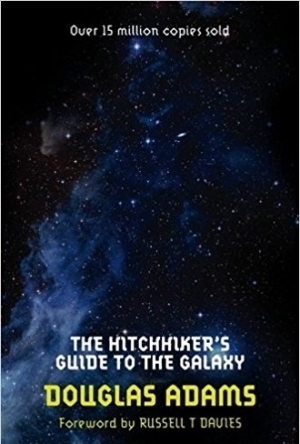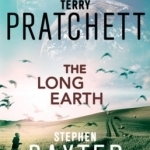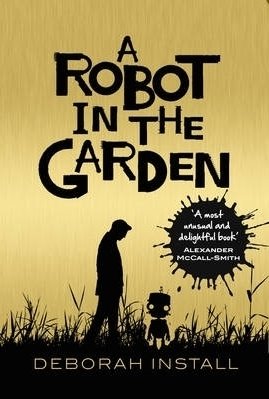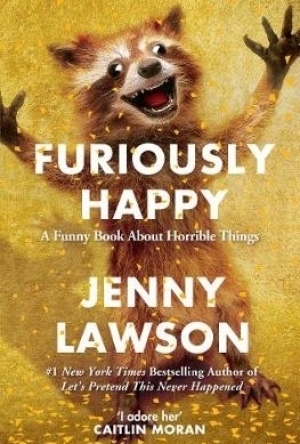Search
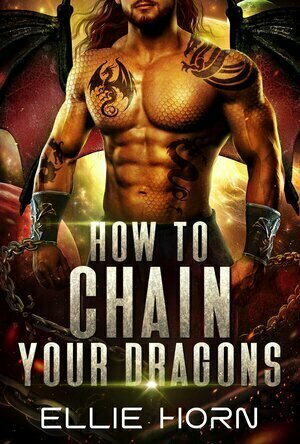
How to Chain Your Dragons
Book
MOVE OVER LITTLE GREEN MEN—THERE’S A NEW ALIEN IN TOWN. With Earth now occupied by monsters...
Reverse Harem Dragons Shifters Science Fiction Romance Post Apocalyptic
Hazel (1853 KP) rated Into the Dim (Into the Dim, #1) in Books
Dec 17, 2018
<i>This ARC was provided by the publisher via NetGalley in exchange for an honest review
Into The Dim</i> by Janet B. Taylor begins with an empty coffin. Fragile sixteen year old Hope is at her mother’s memorial service after her mother’s body was unrecovered after a horrific earthquake. Despite the opinion of her stepfather’s family, Hope is convinced that her mother is still alive. However she has not time to convince anyone before she is shipped off to the Scottish Highlands to spend time with her mother’s sister, Lady Lucinda Carlyle.
Hope finds herself at Christopher Manor, a forbidding ancient mansion that reminds her of <i>Hogwarts</i> (I love that <i>Harry Potter</i> is easily mentioned in many contemporary novels these days! There is also a <i>Doctor Who</i> reference in this book). Despite the old-fashioned setting, the inhabitants are the complete opposite. Firstly there is Phoebe, a bubbly blue-haired girl who is excited about Hope’s arrival at the manor. Phoebe’s brother, Collum, on the other hand, has a contrasting personality. Then there is Lu, who, despite her title, is younger than some may initially imagine her to be.
Through these new characters, Hope learns that her mother is indeed still alive, but trapped somewhere beyond all logic and reason. What is worse, Hope, who is practically scared of her own shadow, along with Phoebe and Collum are the only people who can rescue her. So begins their dangerous but exciting adventure.
<i>Into The Dim</i> is both a contemporary and historical novel, with the science fiction element of time travel thrown in. Time travel is nothing new in fiction, and Taylor’s idea is even based upon the scientist, Nikola Tesla’s discoveries. The storyline itself is a bit of fun with witty characters and humorous banter, yet there is so much more to it than that. Taylor has concocted enough research to help readers to learn something new. Firstly there is Tesla, as already mentioned, and then there is the knowledge and detail of twelfth century London, in particularly involving Eleanor of Aquitaine.
Although the main characters are in their late teens, younger teenagers can also enjoy<i> Into The Dim</i>. There is the occasional reference to mature content, but this is within the context of a historical period, in which younger readers should probably be aware of already from their school history lessons. If you love this book, look out for the sequel next year!
Into The Dim</i> by Janet B. Taylor begins with an empty coffin. Fragile sixteen year old Hope is at her mother’s memorial service after her mother’s body was unrecovered after a horrific earthquake. Despite the opinion of her stepfather’s family, Hope is convinced that her mother is still alive. However she has not time to convince anyone before she is shipped off to the Scottish Highlands to spend time with her mother’s sister, Lady Lucinda Carlyle.
Hope finds herself at Christopher Manor, a forbidding ancient mansion that reminds her of <i>Hogwarts</i> (I love that <i>Harry Potter</i> is easily mentioned in many contemporary novels these days! There is also a <i>Doctor Who</i> reference in this book). Despite the old-fashioned setting, the inhabitants are the complete opposite. Firstly there is Phoebe, a bubbly blue-haired girl who is excited about Hope’s arrival at the manor. Phoebe’s brother, Collum, on the other hand, has a contrasting personality. Then there is Lu, who, despite her title, is younger than some may initially imagine her to be.
Through these new characters, Hope learns that her mother is indeed still alive, but trapped somewhere beyond all logic and reason. What is worse, Hope, who is practically scared of her own shadow, along with Phoebe and Collum are the only people who can rescue her. So begins their dangerous but exciting adventure.
<i>Into The Dim</i> is both a contemporary and historical novel, with the science fiction element of time travel thrown in. Time travel is nothing new in fiction, and Taylor’s idea is even based upon the scientist, Nikola Tesla’s discoveries. The storyline itself is a bit of fun with witty characters and humorous banter, yet there is so much more to it than that. Taylor has concocted enough research to help readers to learn something new. Firstly there is Tesla, as already mentioned, and then there is the knowledge and detail of twelfth century London, in particularly involving Eleanor of Aquitaine.
Although the main characters are in their late teens, younger teenagers can also enjoy<i> Into The Dim</i>. There is the occasional reference to mature content, but this is within the context of a historical period, in which younger readers should probably be aware of already from their school history lessons. If you love this book, look out for the sequel next year!
Lumos (380 KP) rated The Hitchhiker's Guide to the Galaxy in Books
Jan 25, 2018
Not as good as I was expecting.
I was very excited to read Hitchhiker’s Guide to the Galaxy. I even recommended it for this month's book club read. I know it is such an iconic book and so many great quotes and scenes come from it (I remember watching the movie when it came out and I was obsessed with the "So Long and Thanks for all the Fish" song that the dolphins sing... I even had it on a CD) but I just felt as though I was missing something while I was reading through it. Perhaps, I am just not a fan of that sort of dry... British sarcasm.
I have been trying to push myself beyond my typical genre. Science Fiction is generally not one of my favorite, but I thought I would give this book a try since it has been so well received for generations. I’m sure that has to do with it, but I just found myself zoning out when I read. Douglas Adams’ writing style was just a little too… over the top for me. It seemed like the author was just trying to come up with some of the most bizarre names and titles for his characters and locations and it made it hard for me to slog through.
I was ashamed to admit my dislike for the book at book club but I was quick to find that I am not alone in my feelings. None of us particularly cared for the book. Perhaps it is a “millennial” thing? We had also all seen the movie previously and that could have clouded our vision, perhaps when it came to the book.
All that being said, however, I did find some parts of the book a little humorous. I smiled at parts and chuckled a little, but it wasn’t really enough to save the book in my eyes.
I have been trying to push myself beyond my typical genre. Science Fiction is generally not one of my favorite, but I thought I would give this book a try since it has been so well received for generations. I’m sure that has to do with it, but I just found myself zoning out when I read. Douglas Adams’ writing style was just a little too… over the top for me. It seemed like the author was just trying to come up with some of the most bizarre names and titles for his characters and locations and it made it hard for me to slog through.
I was ashamed to admit my dislike for the book at book club but I was quick to find that I am not alone in my feelings. None of us particularly cared for the book. Perhaps it is a “millennial” thing? We had also all seen the movie previously and that could have clouded our vision, perhaps when it came to the book.
All that being said, however, I did find some parts of the book a little humorous. I smiled at parts and chuckled a little, but it wasn’t really enough to save the book in my eyes.
Phil Leader (619 KP) rated The Long Earth in Books
Nov 20, 2019
Step Day. A day that changed the world. A day when the designs for a strange device went viral. Relatively simple to make with a few electronic components and a potato, this small device allowed most people to move sideways into a parallel dimension... and from there they could keep going exploring multiple copies of Earth, each different and all of them untouched and available for colonisation by the population of the overcrowded, overdeveloped and worn out original.
Joshua Valiente is an orphan who discovers that he doesn't actually need a box to move dimensions - to Step - he is a natural, like a few others before him that have already discovered what becomes known as the Long Earth and have kept it to themselves. Big business isn't slow to take advantage, particularly the huge, powerful and shadowy Black Corporation, whose distributed super computer Lobsang claims to be the reincarnation of a Tibetan mechanic. Together Joshua and Lobsang will discover a few of the secrets of the Long Earth, as well as witnessing the worst it brings out in humanity.
With this central idea, Pratchett and Baxter tell the tales of various people affected by the events of Step Day in very different ways. As with the rest of humanity, the narrative is restless, keen to both rush out and see how far along the Long Earth it can travel and to watch how it turns the Earth we all know on its head. This is a book of wonders, a little like Gulliver's Travels in finding interesting variations to explore.
Those expecting the usual slew of jokes, gags, footnotes and humorous characters that typify his Discworld novels will be disappointed. There are light touches to the situations and characters that betray his hand but this is straight science fiction by two great authors who between them manage to convey the huge scale of thousands - millions - of Earths while still being able to tell the story from a human perspective.
Joshua Valiente is an orphan who discovers that he doesn't actually need a box to move dimensions - to Step - he is a natural, like a few others before him that have already discovered what becomes known as the Long Earth and have kept it to themselves. Big business isn't slow to take advantage, particularly the huge, powerful and shadowy Black Corporation, whose distributed super computer Lobsang claims to be the reincarnation of a Tibetan mechanic. Together Joshua and Lobsang will discover a few of the secrets of the Long Earth, as well as witnessing the worst it brings out in humanity.
With this central idea, Pratchett and Baxter tell the tales of various people affected by the events of Step Day in very different ways. As with the rest of humanity, the narrative is restless, keen to both rush out and see how far along the Long Earth it can travel and to watch how it turns the Earth we all know on its head. This is a book of wonders, a little like Gulliver's Travels in finding interesting variations to explore.
Those expecting the usual slew of jokes, gags, footnotes and humorous characters that typify his Discworld novels will be disappointed. There are light touches to the situations and characters that betray his hand but this is straight science fiction by two great authors who between them manage to convey the huge scale of thousands - millions - of Earths while still being able to tell the story from a human perspective.

The Shooting Party
John Sutherland, Ronald Wilks and Anton Pavlovich Chekhov
Book
Anton Chekhov's only full-length novel, this Penguin Classics edition of The Shooting Party is...
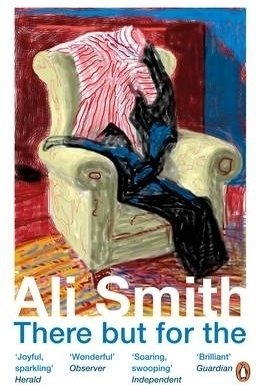
There But for the
Book
Ali Smith, twice shortlisted for both the Man Booker and the Orange Prizes, is back with the...
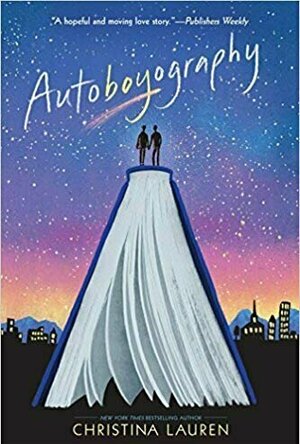
Autoboyography
Book
Coming-of-age novel about two boys who fall in love in a writing class—one from a progressive...
Hazel (1853 KP) rated A Robot in the Garden in Books
May 25, 2017
So Sweet
This ebook was provided by the publisher via NetGalley in exchange for an honest review
What would you do if you found a robot in your garden? That is exactly what, as the title suggests, 34-year-old Ben has to answer on making this discovery early one September morning. Set in the near future where many people have androids in their houses to do the chores they do not wish to do, finding a robot is not a completely unsettling event. What is unusual, however, is that this particular robot is the opposite of the modern, shiny models: he appears to be a mishmash of Japanese fine art and something you would find on a scrap heap.
As Ben discovers, the robot, named Tang is broken and is in need of urgent care and repair. Ben becomes obsessed with trying to pry information out of the robot as to where he came from and to whom he belongs to. Bringing Tang into the house is the last straw for his wife, Amy, who after letting him know all his faults – unemployment, never achieved anything – walks out on him. Now alone, with no one else to worry about, Ben is determined to locate Tang’s creator and save the robot’s life.
What continues is a wild goose chase across America and over to Asia as the strange pairing – human and robot – follows hints and clues that could help them reach their destination. Along the way Ben gets to know Tang and learns to love him in the same way a father loves a child. No matter what mischief Tang gets himself into, Ben is always there to fix the situation. The only thing he cannot fix is Tang’s internal parts, and time is running out.
Initially the story was about a man who wanted to prove he could achieve something to show his sister and his, now, ex-wife that they were wrong about him. However later on in the novel Ben realizes he is changing for himself, not for anyone else, and the person – or robot – that has helped him to achieve this is Tang. On the other hand it is also a humorous tale that explores a character that is unable to connect to the world around him. Tang is like a human toddler who needs constant care and attention, and is fascinated by everything around him. With Ben’s love and attention he proves to the world that he is much more than a rusty metal box.
A Robot in the Garden is a gem of a novel that is guaranteed to make the reader laugh. It is also touching and emotionally engaging, with both heartwarming and heart wrenching moments. Deborah Install has created an accurate representation of a character that has no understanding of the happenings in the world around it, basing many hilarious instances on those of her young son.
Whilst reading this book I could not help but compare it to the film Short Circuit (1986) in which a robot is electrocuted and gains human intelligence. I kept picturing the storyline of A Robot in the Garden in my head and thinking up ways it could be portrayed on screen. Whether there are plans to make it into a film I have no idea, but I am sure it would make prize-winning picture.
Do not be put off by its science fiction classification; A Robot in the Garden is no War of the Worlds or Doctor Who type of story. Instead it is a brilliant piece if fiction suitable for all adults. Those with children will laugh at the similarities between Tang and their offspring, whereas those without will sympathise with Ben’s struggles to keep the robot under control. All in all a great novel.
What would you do if you found a robot in your garden? That is exactly what, as the title suggests, 34-year-old Ben has to answer on making this discovery early one September morning. Set in the near future where many people have androids in their houses to do the chores they do not wish to do, finding a robot is not a completely unsettling event. What is unusual, however, is that this particular robot is the opposite of the modern, shiny models: he appears to be a mishmash of Japanese fine art and something you would find on a scrap heap.
As Ben discovers, the robot, named Tang is broken and is in need of urgent care and repair. Ben becomes obsessed with trying to pry information out of the robot as to where he came from and to whom he belongs to. Bringing Tang into the house is the last straw for his wife, Amy, who after letting him know all his faults – unemployment, never achieved anything – walks out on him. Now alone, with no one else to worry about, Ben is determined to locate Tang’s creator and save the robot’s life.
What continues is a wild goose chase across America and over to Asia as the strange pairing – human and robot – follows hints and clues that could help them reach their destination. Along the way Ben gets to know Tang and learns to love him in the same way a father loves a child. No matter what mischief Tang gets himself into, Ben is always there to fix the situation. The only thing he cannot fix is Tang’s internal parts, and time is running out.
Initially the story was about a man who wanted to prove he could achieve something to show his sister and his, now, ex-wife that they were wrong about him. However later on in the novel Ben realizes he is changing for himself, not for anyone else, and the person – or robot – that has helped him to achieve this is Tang. On the other hand it is also a humorous tale that explores a character that is unable to connect to the world around him. Tang is like a human toddler who needs constant care and attention, and is fascinated by everything around him. With Ben’s love and attention he proves to the world that he is much more than a rusty metal box.
A Robot in the Garden is a gem of a novel that is guaranteed to make the reader laugh. It is also touching and emotionally engaging, with both heartwarming and heart wrenching moments. Deborah Install has created an accurate representation of a character that has no understanding of the happenings in the world around it, basing many hilarious instances on those of her young son.
Whilst reading this book I could not help but compare it to the film Short Circuit (1986) in which a robot is electrocuted and gains human intelligence. I kept picturing the storyline of A Robot in the Garden in my head and thinking up ways it could be portrayed on screen. Whether there are plans to make it into a film I have no idea, but I am sure it would make prize-winning picture.
Do not be put off by its science fiction classification; A Robot in the Garden is no War of the Worlds or Doctor Who type of story. Instead it is a brilliant piece if fiction suitable for all adults. Those with children will laugh at the similarities between Tang and their offspring, whereas those without will sympathise with Ben’s struggles to keep the robot under control. All in all a great novel.
Hazel (1853 KP) rated A Robot in the Garden in Books
Dec 14, 2018
<i>This ebook was provided by the publisher via NetGalley in exchange for an honest review </i>
What would you do if you found a robot in your garden? That is exactly what, as the title suggests, 34-year-old Ben has to answer on making this discovery early one September morning. Set in the near future where many people have androids in their houses to do the chores they do not wish to do, finding a robot is not a completely unsettling event. What is unusual, however, is that this particular robot is the opposite of the modern, shiny models: he appears to be a mishmash of Japanese fine art and something you would find on a scrap heap.
As Ben discovers, the robot, named Tang is broken and is in need of urgent care and repair. Ben becomes obsessed with trying to pry information out of the robot as to where he came from and to whom he belongs to. Bringing Tang into the house is the last straw for his wife, Amy, who after letting him know all his faults – unemployment, never achieved anything – walks out on him. Now alone, with no one else to worry about, Ben is determined to locate Tang’s creator and save the robot’s life.
What continues is a wild goose chase across America and over to Asia as the strange pairing – human and robot – follows hints and clues that could help them reach their destination. Along the way Ben gets to know Tang and learns to love him in the same way a father loves a child. No matter what mischief Tang gets himself into, Ben is always there to fix the situation. The only thing he cannot fix is Tang’s internal parts, and time is running out.
Initially the story was about a man who wanted to prove he could achieve something to show his sister and his, now, ex-wife that they were wrong about him. However later on in the novel Ben realizes he is changing for himself, not for anyone else, and the person – or robot – that has helped him to achieve this is Tang. On the other hand it is also a humorous tale that explores a character that is unable to connect to the world around him. Tang is like a human toddler who needs constant care and attention, and is fascinated by everything around him. With Ben’s love and attention he proves to the world that he is much more than a rusty metal box.
<i>A Robot in the Garden</i> is a gem of a novel that is guaranteed to make the reader laugh. It is also touching and emotionally engaging, with both heartwarming and heart wrenching moments. Deborah Install has created an accurate representation of a character that has no understanding of the happenings in the world around it, basing many hilarious instances on those of her young son.
Whilst reading this book I could not help but compare it to the film <i>Short Circuit</i> (1986) in which a robot is electrocuted and gains human intelligence. I kept picturing the storyline of <i>A Robot in the Garden</i> in my head and thinking up ways it could be portrayed on screen. Whether there are plans to make it into a film I have no idea, but I am sure it would make prize-winning picture.
Do not be put off by its science fiction classification; <i>A Robot in the Garden</i> is no <i>War of the Worlds</i> or <i>Doctor Who</i> type of story. Instead it is a brilliant piece if fiction suitable for all adults. Those with children will laugh at the similarities between Tang and their offspring, whereas those without will sympathise with Ben’s struggles to keep the robot under control. All in all a great novel.
What would you do if you found a robot in your garden? That is exactly what, as the title suggests, 34-year-old Ben has to answer on making this discovery early one September morning. Set in the near future where many people have androids in their houses to do the chores they do not wish to do, finding a robot is not a completely unsettling event. What is unusual, however, is that this particular robot is the opposite of the modern, shiny models: he appears to be a mishmash of Japanese fine art and something you would find on a scrap heap.
As Ben discovers, the robot, named Tang is broken and is in need of urgent care and repair. Ben becomes obsessed with trying to pry information out of the robot as to where he came from and to whom he belongs to. Bringing Tang into the house is the last straw for his wife, Amy, who after letting him know all his faults – unemployment, never achieved anything – walks out on him. Now alone, with no one else to worry about, Ben is determined to locate Tang’s creator and save the robot’s life.
What continues is a wild goose chase across America and over to Asia as the strange pairing – human and robot – follows hints and clues that could help them reach their destination. Along the way Ben gets to know Tang and learns to love him in the same way a father loves a child. No matter what mischief Tang gets himself into, Ben is always there to fix the situation. The only thing he cannot fix is Tang’s internal parts, and time is running out.
Initially the story was about a man who wanted to prove he could achieve something to show his sister and his, now, ex-wife that they were wrong about him. However later on in the novel Ben realizes he is changing for himself, not for anyone else, and the person – or robot – that has helped him to achieve this is Tang. On the other hand it is also a humorous tale that explores a character that is unable to connect to the world around him. Tang is like a human toddler who needs constant care and attention, and is fascinated by everything around him. With Ben’s love and attention he proves to the world that he is much more than a rusty metal box.
<i>A Robot in the Garden</i> is a gem of a novel that is guaranteed to make the reader laugh. It is also touching and emotionally engaging, with both heartwarming and heart wrenching moments. Deborah Install has created an accurate representation of a character that has no understanding of the happenings in the world around it, basing many hilarious instances on those of her young son.
Whilst reading this book I could not help but compare it to the film <i>Short Circuit</i> (1986) in which a robot is electrocuted and gains human intelligence. I kept picturing the storyline of <i>A Robot in the Garden</i> in my head and thinking up ways it could be portrayed on screen. Whether there are plans to make it into a film I have no idea, but I am sure it would make prize-winning picture.
Do not be put off by its science fiction classification; <i>A Robot in the Garden</i> is no <i>War of the Worlds</i> or <i>Doctor Who</i> type of story. Instead it is a brilliant piece if fiction suitable for all adults. Those with children will laugh at the similarities between Tang and their offspring, whereas those without will sympathise with Ben’s struggles to keep the robot under control. All in all a great novel.
Louise (64 KP) rated Furiously Happy in Books
Jul 2, 2018
So! where do I start! hmmmm....
This a non-fiction memoir about a woman, Jenny Lawson who suffers from mental illness, but not just one she has a whole mixed bag of mental health problems, Jenny suffers from depression, anxiety, insomnia, ADD and others.
This is her memoir of how she copes with mental health and what is like to live with these debilitating illnesses. The book is told in several short stories of Jenny's life, there are also pictures added in several of the chapters.(proof that these things really happened).
Her husband Victor is a saint that's all I can say, Jenny is crazy but in a good way crazy, she just talks about the most random things ever, but this a symptom of anxiety you over think things and you can tell by her writing.
This book is very funny, and Jenny isn't bothered about the stigma that is still attached to mental health, she is just being herself which is so refreshing.
I never heard of Jenny Lawson when I requested this book, I was more drawn to the synopsis and the amazing raccoon on the front cover. Jenny is a taxidermist's daughter and has a lot of love for stuffed animals which is clear in the book and shown with pictures.
I really could relate to Jenny as I suffer from depression and anxiety, I knew where she was coming from and when she was explaining they symptoms, I was like yes, I get that too! The book is very funny in places, but there are parts which I think are just silly!
My favourite part of the book has to be when she is trying to convinve Victor to get another cat so she can call it the 'President', her ideas are very witty and weird - i mean who thinks of stuff like this.
Whilst this book was good and funny, I was wanting her to be a bit more serious in some parts. I wanted to know how she really felt without trying to make it humorous. And yeah I know it's a serious topic and she is trying to make it light-hearted but I feel that maybe she is still holding back on what she really wants to say.
There is a trigger warning for this book, it does discuss self harm and suicide, so if you are easily offended I would not suggest it for you. Also there is a lot of swearing/cussing.
This is Jenny's second book, first being Let's pretend this never happened and also she has her own blog called the bloggess which I will be following.
I would recommend this book for anyone suffering from mental illness or has a family member/friends that does.
I rated this book 3.5 stars out of 5.
For more of my reviews please check out www.louiselovesbooks.wordpress.com
This a non-fiction memoir about a woman, Jenny Lawson who suffers from mental illness, but not just one she has a whole mixed bag of mental health problems, Jenny suffers from depression, anxiety, insomnia, ADD and others.
This is her memoir of how she copes with mental health and what is like to live with these debilitating illnesses. The book is told in several short stories of Jenny's life, there are also pictures added in several of the chapters.(proof that these things really happened).
Her husband Victor is a saint that's all I can say, Jenny is crazy but in a good way crazy, she just talks about the most random things ever, but this a symptom of anxiety you over think things and you can tell by her writing.
This book is very funny, and Jenny isn't bothered about the stigma that is still attached to mental health, she is just being herself which is so refreshing.
I never heard of Jenny Lawson when I requested this book, I was more drawn to the synopsis and the amazing raccoon on the front cover. Jenny is a taxidermist's daughter and has a lot of love for stuffed animals which is clear in the book and shown with pictures.
I really could relate to Jenny as I suffer from depression and anxiety, I knew where she was coming from and when she was explaining they symptoms, I was like yes, I get that too! The book is very funny in places, but there are parts which I think are just silly!
My favourite part of the book has to be when she is trying to convinve Victor to get another cat so she can call it the 'President', her ideas are very witty and weird - i mean who thinks of stuff like this.
Whilst this book was good and funny, I was wanting her to be a bit more serious in some parts. I wanted to know how she really felt without trying to make it humorous. And yeah I know it's a serious topic and she is trying to make it light-hearted but I feel that maybe she is still holding back on what she really wants to say.
There is a trigger warning for this book, it does discuss self harm and suicide, so if you are easily offended I would not suggest it for you. Also there is a lot of swearing/cussing.
This is Jenny's second book, first being Let's pretend this never happened and also she has her own blog called the bloggess which I will be following.
I would recommend this book for anyone suffering from mental illness or has a family member/friends that does.
I rated this book 3.5 stars out of 5.
For more of my reviews please check out www.louiselovesbooks.wordpress.com

